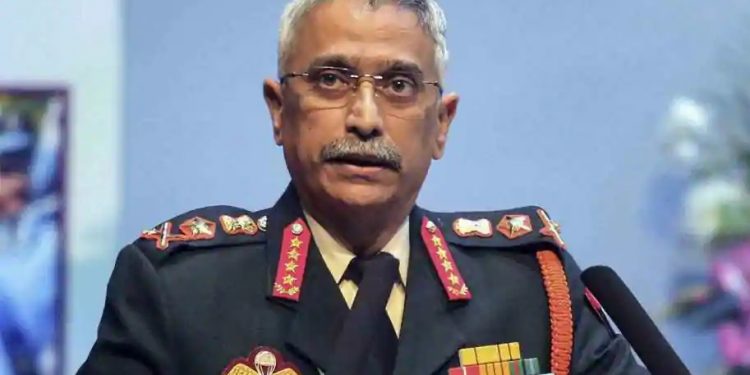New Delhi: In a reference to the eastern Ladakh row, Chief of Army Staff General MM Naravane said Thursday the situation along the northern frontier highlighted the nature of threats facing India. However, MM Naravane noted that India will do everything in preserving its territorial integrity and sovereignty. He noted that the ‘legacy challenges’ have only grown in scale and intensity. Naravane informed that the Indian Army will continue to prepare and adapt to the future challenges. However, the more ‘proximate, real and present dangers’ on India’s ‘active borders’ cannot be ignored.
The Army Chief was addressing a seminar organised by Centre for Land Warfare Studies, a leading military think-tank.
For the last nine months, thousands of Indian and Chinese troops have been engaged in a bitter border standoff in eastern Ladakh. It created severe strain in overall bilateral ties. Defence Minister Rajnath Singh announced Thursday in Parliament that both sides reached an agreement on disengagement of troops The disengagement will take place in the north and south bank of Pangong lake which is a major face-off site.
“Without doubt there are newer threats on the horizon. But the hard reality is that the legacy challenges have not quite gone away. In fact, they have only grown in scale and intensity,” Naravane said.
“The Indian Army will continue to prepare and adapt to the future. However, the more proximate, real and present dangers, on our active borders cannot be ignored,” he added. It was an apparent reference to the nearly 3,500 km Line of Actual Control (LAC) with China.
Naravane said the principal challenge before the Armed Forces today is that of the growing capability enhancements in an era of ‘finite budgets’, adding the structures, inventories and human resources of the military will need to adapt and transform accordingly. “The future lies in becoming agile, smart, fleet footed and innovative in thought and action alike,” he informed.
At the same time, Naravane said the Indian Army is steadily consolidating their structures and capabilities. It will help them win ‘wars of the future’.







































